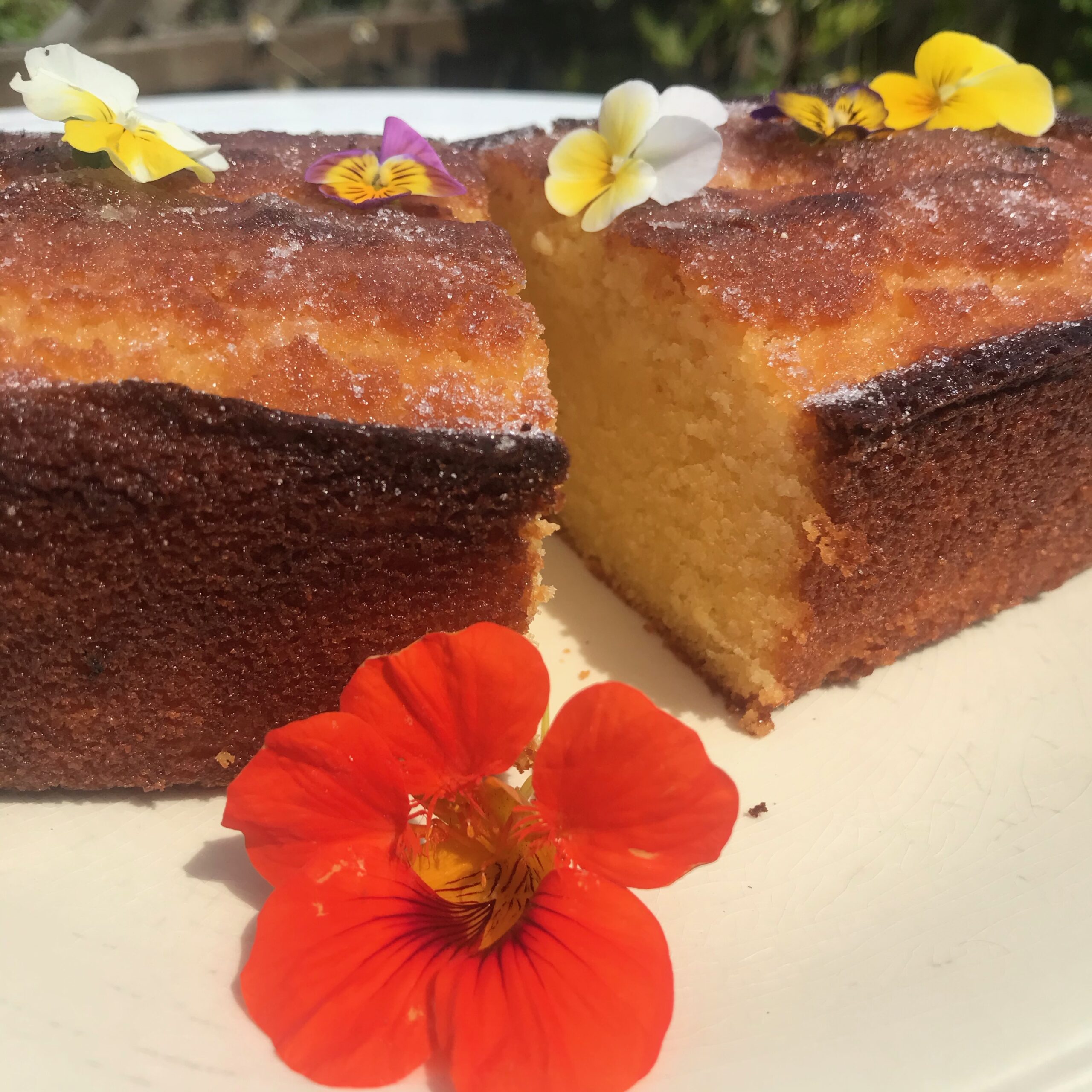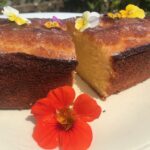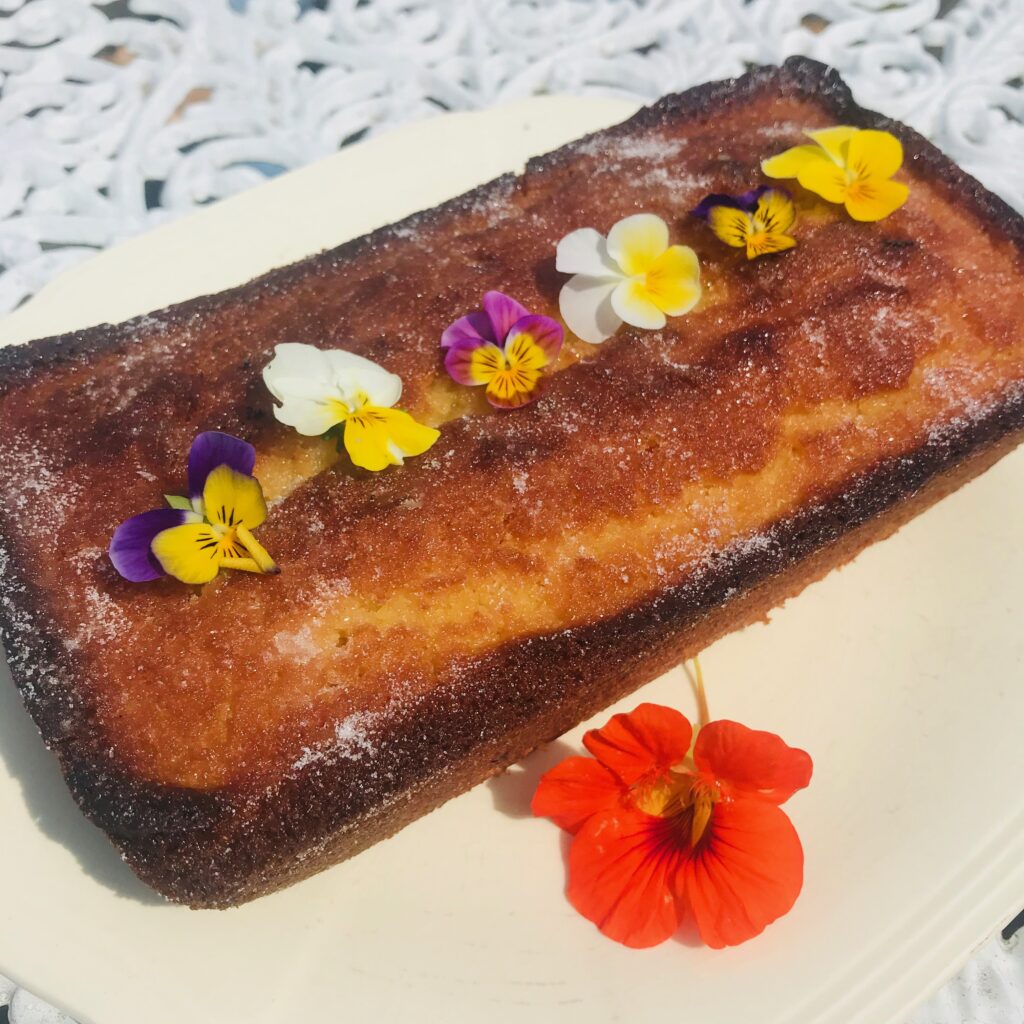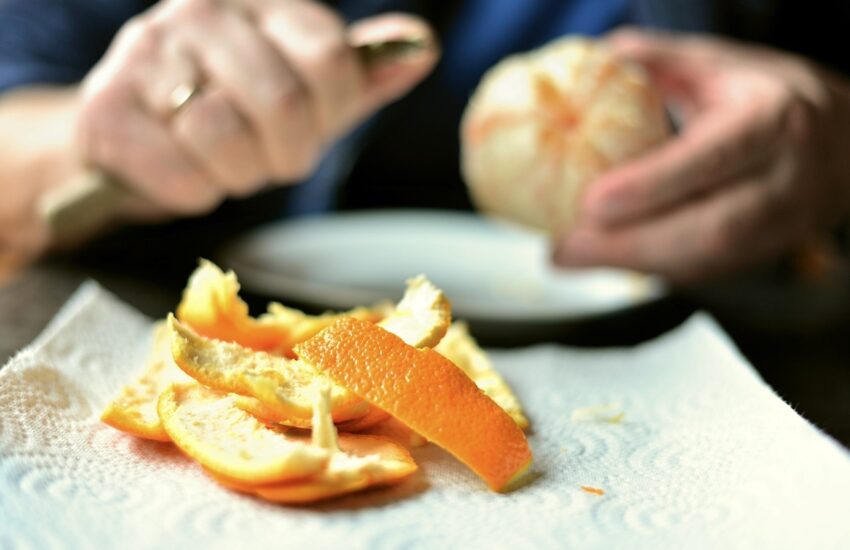Zero Waste Recipe : Lemon & Dandelion Syrup Drizzle Cake
Jazzing up a Drizzle Cake
Anyone who likes lemons will love lemon drizzle cake. Light, fluffy, and deliciously zesty, it is the perfect cake for any occasion – any time of the day!
Although the exact origin of lemon cake is unknown, some believe it derives from the pound cake, which first appeared in England around the start of the 17th century. Pound cake is a simple yet dense cake traditionally made to feed large groups of people. To the Victorian sponge it has a richer flavour, made with a pound of each ingredient: flour, butter, eggs, and sugar.
The first recipe for sponge cake appeared in 1615, in a recipe book by English author Gervase Markham, called The English Huswife. Although closer to a type of sponge biscuit, called Ladyfingers or ‘boudoir biscuits’, this recipe rapidly took off. In one direction it became a savoy cake (a fatless sponge ideal for trifles, originally from the Savoy region of France), the other became termed a pound cake (requiring one pound – roughly 500g – each of the four main ingredients). It is from the latter we suspect the lemon drizzle derives.
Now we do admit lemon drizzle cake is perfectly delicious just as it is, and certainly needs no deviation from the classic recipe. However, having made some dandelion syrup earlier in the season, we decided to go against tradition and see how the syrup works in a drizzle cake.
Poured over sponge, dandelion syrup offers a slightly more moist and sticky texture. & surely when it comes to drizzle cake there’s no such thing as too gooey!!
Combining this wild sweet syrup with a lemon zesty sharpness might just be the makings of a new homemade drizzle cake. Delicious! Try the recipe below and see what you think yourself?
Zero Waste Recipe : Lemon & Dandelion Syrup Drizzle Cake
8-10
servings15
minutes40
minutesRecipe by Ashleigh, Founder of Greenhouse Culture
Ingredients
For the Cake
175g/6oz softened butter
175g/6oz golden caster sugar
2 large free-range eggs
175g/6oz self-raising flour
zest and juice of 1/2 a lemon
1/2 tsp vanilla bean paste or vanilla extract (optional)
INGREDIENTS
FOR THE DRIZZLE TOPPING1½ lemons, juiced
85g caster sugar (+ a little extra to sprinkle on top)
2 tbsp dandelion syrup (optional)
Directions FOR THE CAKE
- Preheat the oven to 180C / 350F / Gas Mark 4. Grease a 2lb (900g) loaf tin.
- Cream the butter and sugar together until pale and fluffy.
- Beat in eggs one at a time, adding a tbsp of flour with each. This stops the mixture from splitting.
- Fold in the rest of the flour.
- Gently stir in the lemon zest, juice, and vanilla (if using).
- Spoon into the tin and bake until golden and firm to the touch, approx 35-40 minutes.
- Take out of the oven and allow to rest in the tin while you make the drizzle.
- FOR THE DRIZZLE
- Combine the lemon juice and sugar in a small saucepan and simmer over a low heat until the sugar has dissolved.
- While the cake is still warm poke holes in it, with a skewer or fork.
- Gently drizzle half the lemon syrup over the top until completely absorbed.
- Spoon over the dandelion syrup, followed by the remaining lemon syrup.
- While still moist, sprinkle the top with extra sugar to give it that authentic drizzle-cake style topping.
Notes
- For added sweetness, or as an alternative, you can use a light coat of icing sugar instead of the sugar sprinkle.
- If the top starts browning too quickly during the cooking process, cover it with a lid or foil.
- This cake is best eaten fresh but will keep in an airtight container in a fridge for a week.
- Too yummy to last long enough to test how well it freezes. Though going by traditional drizzle cakes, we suspect it will freeze perfectly for up to 3 months, in an airtight container.
- To thaw the cake, place on a wire rack and leave at room temperature for 3 to 4 hours. Once the cake has thawed, store it in an airtight container in a cool place. Eat within a few days.
Edible Flowers
- Edible flowers are a great way to add a final touch of colour to your cake. For the drizzle cake we gathered violas and nasturtiums. This is one of the fun and playful parts of baking, so we encourage experimenting with all manor of wild and edible decorative delights!!
- The Viola (decorating the top of our drizzle cake) is a beautifully delicate plant, in both appearance and taste. Commonly known as heartsease for its medicinal properties, Viola tricolour has long been used as an edible flower, sprinkled on salads or desserts. The leaves are high in vitamins A and C, and can be used in salads or cooked as greens.
- Did you know you can eat the entire Nasturtium plant. The leaves have a peppery taste, similar to rocket and watercress. The flowers are slightly milder and sweeter. The seeds are hot and flavourful, and can be dried and ground as a pepper substitute. This wild and wonderful plant contain high amounts of manganese, iron, flavonoids, and beta carotene. A good source of vitamin C, nasturtiums have many herbal medicinal uses. It has the ability to improve the immune system, tackling sore throats, coughs, and colds. Tea made from the leaves is a common preventative for colds and flu. This beautiful plant also has anti-bacterial, anti-fungal and antiseptic qualities.
We added a few Nasturtiums as decoration, though as an edible pairing to drizzle cake the flavour of this delicious flower is a little too intense for this cake.




